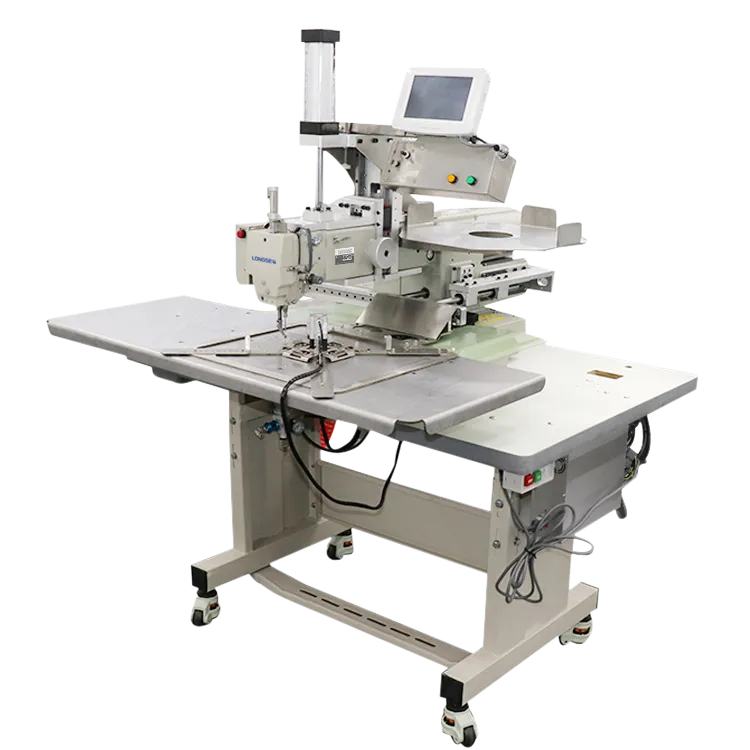Guidelines for Using a Twin Needle with Your Sewing Machine
How to Use a Twin Needle on a Sewing Machine
Sewing enthusiasts often experiment with various techniques to enhance their projects. One popular tool that can elevate your sewing game is the twin needle. This specially designed needle allows you to create two parallel lines of stitching simultaneously, making it ideal for hems, decorative stitching, and adding a professional touch to your garments. In this article, we’ll guide you through the steps of using a twin needle on your sewing machine.
Understanding the Twin Needle
A twin needle is essentially two needles attached to a single shank, with a space between them. They come in various sizes and styles, which means you can choose one that suits your fabric and project requirements. Twin needles are typically used with a straight stitch or a zigzag stitch, depending on your sewing machine capabilities.
Selecting the Right Needle
Before you start sewing, it’s essential to choose the right twin needle for your fabric. Sizes range from 1.6 mm to 4.0 mm (measured by the distance between the needles), and these sizes usually correspond to the weight of the fabric. For instance, a smaller twin needle (1.6 mm) is perfect for lightweight fabrics like cotton, while a larger needle (3.0 mm or 4.0 mm) works better for heavier materials such as denim or knit fabrics.
Preparing Your Sewing Machine
1. Install the Twin Needle Begin by unplugging your sewing machine. Remove the existing needle and replace it with the twin needle, ensuring that it is correctly inserted and secured in the needle clamp. The flat side of the shank should face the back of the machine.
2. Adjust Your Threading You will need to spool two threads—one for each needle. Make sure to use two separate spools of thread, or you can double the thread from a single spool using a thread guide. Each thread should be threaded through its respective needle, ensuring that they are not tangled.
3. Check the Bobbin Use a standard single needle bobbin thread, as the twin needle does not require a special bobbin. Make sure the bobbin is wound correctly to prevent any sewing issues.
Setting Up Your Machine
how to use twin needle on sewing machine

With the twin needle installed and threaded, you will need to adjust your sewing machine settings
1. Stitch Type Select a straight stitch or zigzag stitch, depending on your desired effect. Keep in mind that not all machines allow zigzag with a twin needle, so consult your machine's manual.
2. Stitch Width If you’re using a zigzag stitch, set the stitch width to a very low setting (usually below the distance between the twin needles). This ensures that each needle gets its own line of stitching without causing any overlap.
3. Tension and Speed Make sure to adjust the thread tension and keep the sewing speed moderate. A slower speed will help maintain control over the fabric and prevent bunching.
Stitching with a Twin Needle
Once your machine is set up, it’s time to start sewing
1. Position Your Fabric Place your fabric under the presser foot, ensuring that the lines you wish to sew are aligned with the twin needles.
2. Begin Sewing Start sewing slowly while guiding the fabric with your hands. The twin needle will create two parallel rows of stitches, which not only looks professional but also provides additional stretch to knit fabrics.
3. Finishing Up After you finish sewing, lift the presser foot and carefully trim any excess threads. If you’ve used a zigzag stitch, check that the fabric does not have any puckering.
Conclusion
Using a twin needle can greatly expand your sewing possibilities, allowing for more creativity and a professional finish in your projects. With the right preparation and a bit of practice, you’ll find that adding parallel lines of stitching is not only easy but also incredibly rewarding. So grab your twin needle and start experimenting with different fabrics and patterns today!
-
Boost Production Efficiency with a Pattern Sewing MachineNewsAug.29,2025
-
Industrial Excellence with the Best Heavy Duty Sewing MachineNewsAug.29,2025
-
Precision and Power with the Best Pattern Sewing MachineNewsAug.29,2025
-
Reliable Bulk Packaging Starts With the Right FIBC Sewing MachineNewsAug.29,2025
-
Advanced Packaging Solutions: Elevate Productivity with Jumbo Bag Sewing Machine and Industrial Stitching EquipmentNewsAug.29,2025
-
High-Performance Solutions for Bulk Packaging: FIBC Sewing Machine and MoreNewsAug.29,2025
-
Maximize Efficiency with an Industrial Cylinder Arm Sewing MachineNewsAug.28,2025


























